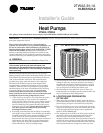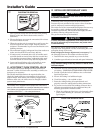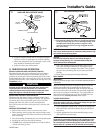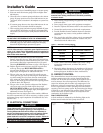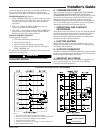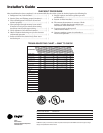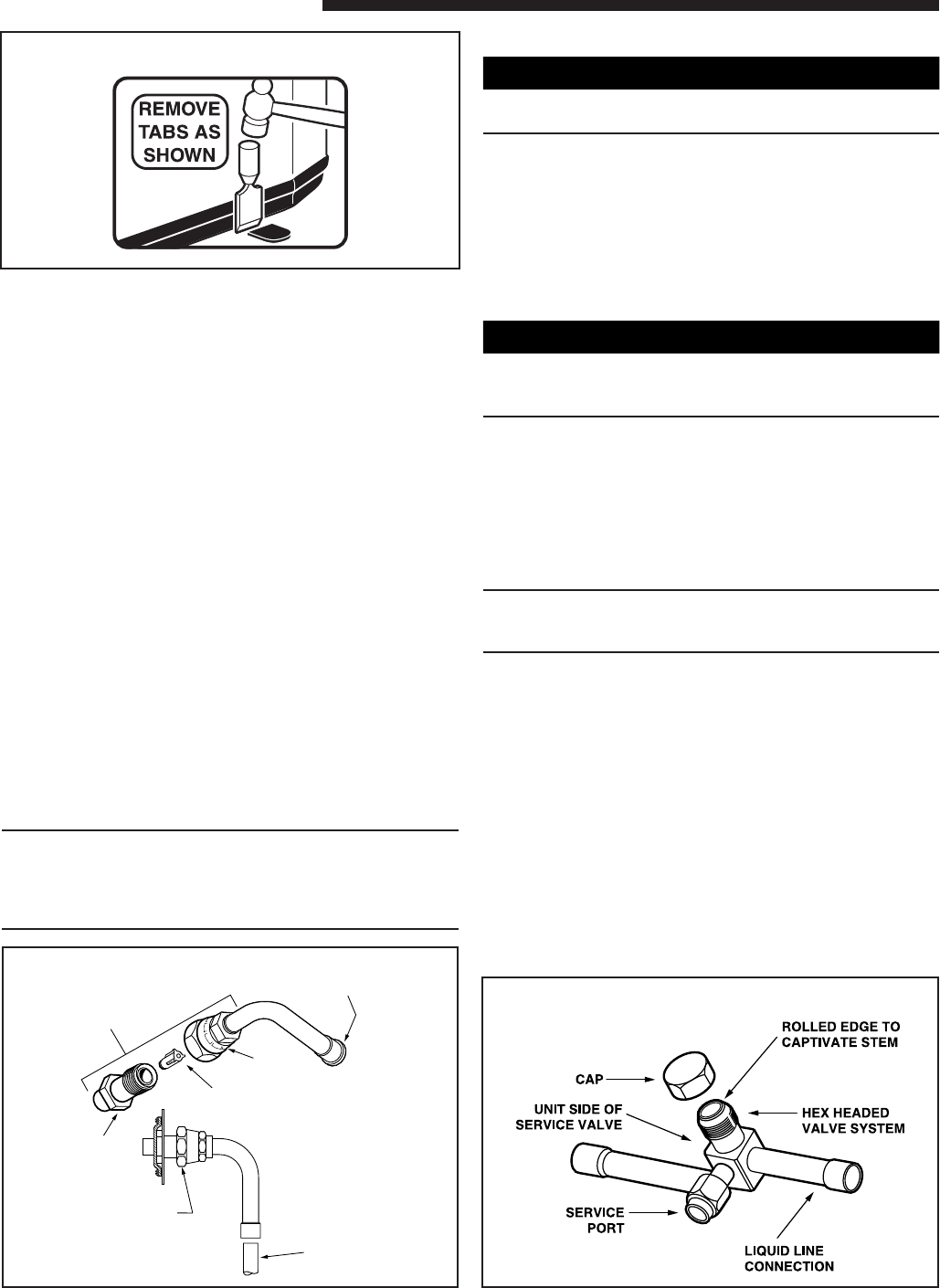
© 2002 American Standard Inc. All Rights Reserved 18-BC51D3-2
Installer’s Guide
ture to prevent excess roof run-off water from pouring
directly on the unit. Do not locate unit(s) close to
bedroom(s).
4. The top discharge area must be unrestricted for at least
five (5) feet above the unit.
5. When the outdoor unit is mounted on a roof, be sure the
roof will support the unit’s weight. Properly selected
isolation is recommended to prevent transmission to the
building structure.
6. The maximum length of refrigerant lines from outdoor to
indoor unit should NOT exceed sixty (60) feet.
7. If outdoor unit is mounted above the air handler, maxi-
mum lift should not exceed sixty (60) feet (suction line).
If air handler is mounted above condensing unit, maxi-
mum lift should not exceed sixty (60) feet (liquid line).
8. Locate and install indoor coil or air handler in accor-
dance with instruction included with that unit.
C. ACCUTRON™ FLOW CONTROL VALVE
If the indoor unit System Refrigerant Flow control is an
Accutron™ orifice and check valve assembly, an orifice size
change may be necessary.
The outdoor model determines the required orifice size.
Check the listed orifice size on nameplate of the selected
outdoor model. If the indoor unit is factory shipped with a
different orifice size, the orifice must be changed to obtain
system rated performance.
IMPORTANT:
The outdoor unit is shipped with the proper size orifice and a
stick-on orifice size label in an envelope attached to the outdoor
unit. Outdoor unit nameplate will have correct orifice size
specified as BAYFCCV --- A for rated performance.
D. INSTALLING REFRIGERANT LINES
▲
CAUTION
!
If using existing refrigerant lines make certain that all joints
are brazed, not soldered.
Condensing units have provisions for braze connections.
Pressure taps are provided on the service valves of outdoor
unit for compressor suction and liquid pressures.
The indoor end of the recommended refrigerant line sets may
be straight or with a 90 degree bend, depending upon
situation requirements. This should be thoroughly checked
out before ordering refrigerant line sets.
The gas line must always be insulated.
▲
CAUTION
!
In scroll compressor applications, dome temperatures may
be hot. Do not touch top of compressor, may cause minor
to severe burning.
The units are factory charged with the system charge
required when using fifteen (15) feet of connecting line. Unit
nameplate charge is the same.
Final refrigerant charge adjustment is necessary. Use
the Charging Charts in the outdoor unit Service Facts.
1. Determine the most practical way to run the lines.
2. Consider types of bends to be made and space limitations.
NOTE:
Large diameter tubing will be very difficult to rebend once it
has been shaped.
3. Determine the best starting point for routing the refriger-
ant tubing - -INSIDE OR OUTSIDE THE STRUCTURE.
4. Provide a pull-thru hole of sufficient size to allow both
liquid and gas lines.
5. Be sure the tubing is of sufficient length.
6. Uncoil the tubing --- do not kink or dent.
7. Route the tubing making all required bends and
properly secure the tubing before making connections.
8. To prevent a noise within the building structure due to
vibration transmission from the refrigerant lines, the
following precautions should be taken:
a. When the refrigerant lines have to be fastened to floor
joists or other framing in a structure, use isolation
type hangers.
BASEPAN TAB REMOVAL
2
BRAZE TYPE INDOOR END
3
SEALING CAP
ADAPTER
FLOW CONTROL
CHECK VALVE
(F.C.C.V.) ORIFICE
FIELD SUPPLIED
LIQUID LINE
AS SHIPPED
BODY
ACCUTRON
TM
COMPONENTS
LIQUID LINE SERVICE VALVE
4



